#mendeley reference manager
Explore tagged Tumblr posts
Text
this is a mendeley reference manager hate account
#WHY DID YOU BREAAAKK#I AM TRYING TO DO MY ASSIGNMENT#ARUIHISGDFH#niche content here hi#mendeley reference manager#???? how the fuck do i tag this. gotta make sure the mendeley users find this i GUESS#studyblr#eddie in the ocean
45 notes
·
View notes
Note
Yessss Zotero user!!🖐️ Help me spread the world, persuade people that source managers are good (side-eye to my gf who insists it's fiiiiiine to write a thesis without one...)
CITATION MANAGER EVANGELISM UPON REQUEST
i picked up zotero right when i started graduate school (i can't remember why i chose that one specifically, but i do know i liked it better than mendeley). i have every single reference i used across coursework, exams, dissertation, and publications, which is literally hundreds of items.
not only does it let you keep the citations themselves, you can use libraries, folders, and tagging systems for organization, and zotero allows file attachment (either natively using zotero's cloud storage or linked to a local source), notetaking to a linked document, AND annotation within the program.
i got the most use out of its ms word plugin since that's where i wrote literally everything. every time i added a new citation, i could just zap it in with zotero and the manager would keep track of every reference. at the end, it let me drop the entire formatted reference section right into the document.
the only time it ever failed me was trying to reformat my dissertation references to school standards, and that was probably more the result of my own lack of csl editing knowledge than zotero itself.
please, if you are juggling many references or will be in the future, invest the time in a citation manager.
#OH ALSO there's a mobile app (at least on ios) in case you need to make notes at 3 am. but don't want to get out of bed.#no that never happened why do you ask
101 notes
·
View notes
Text
part 1
Part 2: Research 101
###Some tips for gathering and organizing key information:
create an optimal learning environment
know which learning objective you’re working towards
study in blocks of 45 minutes, taking short breaks in between.
Get in flow state in the morning_ takes about 45 mins. so start by something u like doing and focus on that for 45 mins to reach Flow state
limit distractions while you’re studying
Not everyone learns in the same way and not everyone is distracted by the same things. Ask yourself the following questions to find out which method of concentration works best for you: for how long can you concentrate at a time? At which time of day are you at your best.
##Learning Obj:
The objective that you set yourself when reading a text influences how you prepare for reading, your reading speed, and whether (and how) you take notes. Before you start reading, it is important to ask yourself the following questions:
In how much detail do I want to understand this text?
How much prior knowledge do I have on this topic?
How much do I want to remember of this text after I’ve read it?
Do I need to criticize this text?
Is it important to draw links between this text and the lectures or other sources?
How you answer these questions will determine how you can best approach the text.
##How to read academic text:
At the end of each chapter, it is a good idea to rewrite or retype all of the concepts and their definitions, so that you have one overarching list of concepts. If you only need to extract essential information from a text for an exam or your own research, you certainly don’t need to read all of the sections. The introduction and the conclusion are often good starting points for quickly discovering: 1) the central concepts and theories; 2) how they are operationalized (that is, how they are used in the research; see also Part 2); and 3) which research results this led to. It is often useful to scan the methods section to find out exactly what the researchers did with the above-mentioned concepts and theories. This section is often very technical, however, and laden with jargon that applies specifically to the researcher’s field. If you only need to understand the essence of the text, you’ll rarely need this level of detail.

Here is an example of systematic reading...
##organizing info:
If you are reading texts in order to write an article, it is essential to keep track of the sources you’ve found and what kind of information you have got (or can get) from them. You should start doing this as you scan the search results. When you study your sources thoroughly and critically, it is important to make a personal record of which information is relevant for further research. Use reference management software such as Mendeley.
###Studying thoroughly and critically:
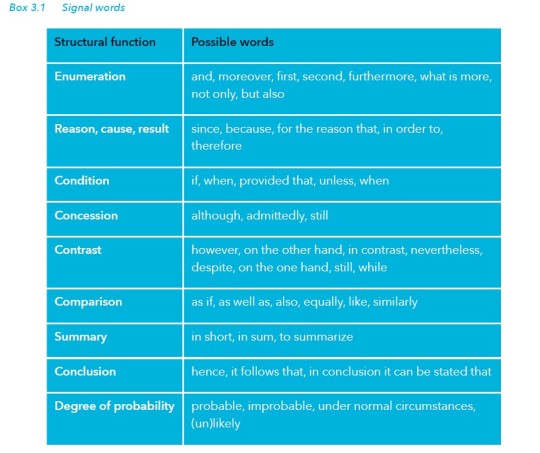
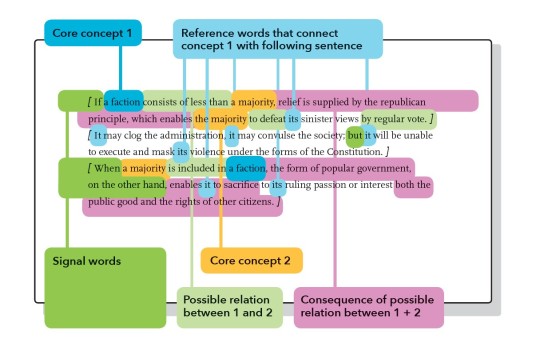
By organizing, collecting and assessing theories, you will broaden your understanding of your research field – and this will ultimately allow you to sharpen the focus of your own research, too. The process of considering multiple theories provides a rapid insight into which issues have yet to be resolved in academia, and where there is still room for a new study or piece of research. This process of considering and discussing existing theories, accompanied by your own critical reflection on these and your own argument about where the theoretical gaps in scholarship lie, is also known as the theoretical framework.
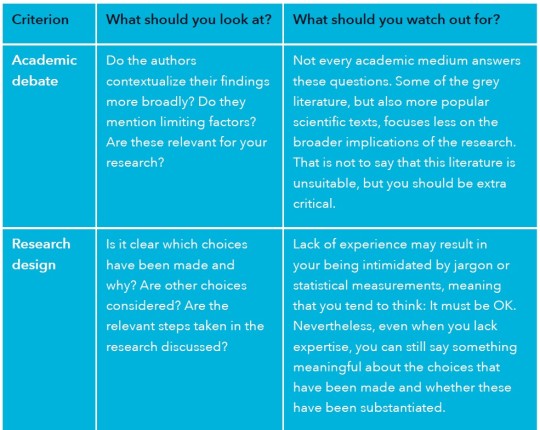
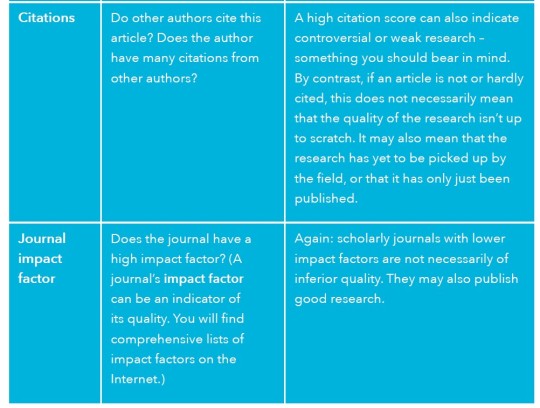
#research#graduate school#studyblr#100 days of productivity#stem academia#women in stem#stemblog#stemblr#studyabroad#study tips#post grad life#gradblr#grad student#grad school#study motivation#study space#study blog#studyspo#programming#coding
18 notes
·
View notes
Text
How to Conduct a Literature Review Using Digital Tools (with Notion Template)
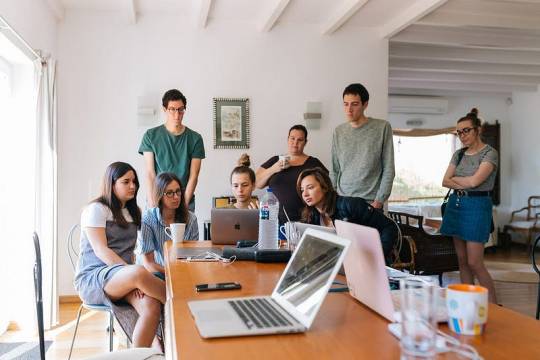
Embarking on a literature review is a fundamental component of academic research that can often appear overwhelming due to the sheer volume of relevant articles and sources. However, leveraging digital tools like Notion can substantially streamline and enhance this process. By providing a structured approach, Notion enables researchers to manage their literature reviews with greater efficiency and organization. This comprehensive guide will walk you through a methodical literature review workflow using Notion, explore various digital tools, and offer a Notion template to facilitate your research.
The Benefits of Using Notion

Notion is an advanced organizational tool that integrates the functionalities of note-taking, project management, and database creation into a single platform. Its versatility is particularly advantageous for managing a literature review. Here are several key benefits of using Notion:
Integration of Pages and Databases: Notion allows for seamless linking of pages and embedding of databases within other pages. This interconnected structure facilitates comprehensive data management and easy navigation between related information.
Customizable Filters and Sorting: Users can create custom properties and apply filters to databases, which enables sophisticated sorting and retrieval of data tailored to specific research needs.
Efficient Data Management: Notion supports the transfer and management of data from Excel sheets, enhancing the organization and accessibility of research materials.
In my workflow, Notion plays a central role through two primary databases: the ‘literature tracker’ and the ‘literature notes’ matrix. These databases are instrumental in tracking papers and synthesizing information to construct a coherent argument.
Stages to Literature Review Workflow

1. The Literature Search
The initial phase of a literature review involves a systematic search for relevant sources. This step is critical for building a comprehensive and well-rounded review.
Identify Keywords: Begin by developing a list of keywords that are pertinent to your research questions. Engage with your supervisor or colleagues to refine this list, ensuring it encompasses all relevant terms. As you progress, be prepared to adjust your keywords based on emerging research trends and findings.
Utilize Database Search Tools: Employ established databases such as Web of Science, Scopus, Google Scholar to locate pertinent literature. These platforms offer extensive search functionalities and access to a broad range of academic papers. Additionally, set up email alerts for new publications related to your keywords. This proactive approach ensures that you remain informed about the latest developments in your field.
Library Building and Recommendations: Manage your literature library using tools like Mendeley, which facilitates the organization of references and offers recommendations for related papers. Mendeley’s sharing capabilities also enable collaboration with colleagues, enhancing the collective management of research resources.
2. Literature Mapping Tools

Literature mapping tools are invaluable for visualizing the relationships between papers and identifying key research themes.
Citation Gecko: This tool constructs a citation tree from ‘seed papers,’ illustrating the connections between various studies through their citation relationships. It is particularly useful for uncovering seminal works and understanding the progression of research topics.
Connected Papers: Connected Papers uses a similarity algorithm to generate a graph of related papers based on a given key paper. This tool provides insights into related research that may not be immediately evident through direct citation links, helping to broaden your understanding of the field.
3. The Literature Tracker
An organized literature tracker is essential for managing and reviewing research papers effectively.
Organize with Notion: Utilize Notion’s customizable properties to document essential details of each paper. This includes metadata such as title, author, publication date, keywords, and summary. The ability to filter and sort this data simplifies the process of managing large volumes of literature.
Database Views: Notion offers various database views, such as the kanban board, which can be used to track your reading workflow. This visual representation aids in monitoring your progress and managing tasks associated with your literature review.
4. The Literature Synthesis Matrix
The synthesis matrix is a crucial component for organizing and synthesizing information from the literature.
Second Pass of Papers: After an initial screening, populate the ‘literature notes’ database with detailed information from the papers you deem relevant. This should include comprehensive notes on the paper’s summary, key results, methodology, critiques, and any future work suggested.
Relational Databases: Leverage Notion’s relational database capabilities to link related papers and create a synthesis matrix. This matrix helps in identifying connections between different studies and assists in constructing a coherent narrative for your literature review.
5. Writing Your Literature Review

Writing a literature review involves synthesizing the collected information into a structured and insightful analysis.
Identify Research Themes: Use your literature matrix to pinpoint key research themes and questions. These themes will form the basis of your literature review sections and guide the development of your thesis statement(s).
Summarize and Evaluate Sources: Focus on the most significant sources for each theme, summarizing their key points and critically evaluating their contributions. This involves assessing the strengths and weaknesses of each study and linking related research to provide a comprehensive overview.
Situate Your Research: Clearly articulate the research gap your study addresses, justifying your research approach based on the identified gaps and the synthesis of the reviewed literature.
6. Iterating Your Literature Review
A literature review is a dynamic process that requires regular updates and revisions.
Regular Updates: Continuously update your literature review as new research emerges. Balance the time spent on reading with the progress of your own research to ensure that your review remains current and relevant.
Notion Template
To facilitate your literature review process, I have developed a Notion template that includes:
A Literature Tracker Database: For recording and managing details of relevant papers.
A Literature Notes Database: For detailed notes and synthesis of the literature.
Predefined Properties: For filtering and sorting entries according to specific research needs.
You can duplicate and customize this template to fit your research requirements.
Useful Resources
Here are some additional resources that can aid in the literature review process:
The Literature Review: Step-by-Step Guide for Students
3 Steps to Save You From Drowning in Your Literature Review
How to Write a Literature Review
How to Become a Literature Searching Ninja
Mind the Gap
7 Secrets to Write a PhD Literature Review The Right Way
By following this structured approach and utilizing digital tools like Notion, you can streamline your literature review process, enhance organization, and ensure that your research is thorough and well-founded. This methodology not only simplifies the review process but also provides a robust framework for developing a strong thesis or dissertation.
Investing in your academic future with Dissertation Writing Help For Students means choosing a dedicated professional who understands the complexities of dissertation writing and is committed to your success. With a comprehensive range of services, personalized attention, and a proven track record of helping students achieve their academic goals, I am here to support you at every stage of your dissertation journey.
Feel free to reach out to me at [email protected] to commence a collaborative endeavor towards scholarly excellence. Whether you seek guidance in crafting a compelling research proposal, require comprehensive editing to refine your dissertation, or need support in conducting a thorough literature review, I am here to facilitate your journey towards academic success. and discuss how I can assist you in realizing your academic aspirations.
#gradblr#academics#education#grad school#phd#phd life#phd research#phd student#phdblr#study#studyspo#students#studyblr#studying#student#study motivation#study blog#university student#uniblr#university#dissertation help#dissertation writing#dissertation abstract#dissertation topics#phdjourney#graduate school#thesis writing#thesis help#thesis tag#thesis statement
6 notes
·
View notes
Text
How do I avoid plagiarism during writing an literature review during research work?
Avoiding plagiarism in a literature review is essential to maintain academic integrity and to show respect for the original authors' ideas.

Here are some strategies to ensure your writing is original and properly sourced:
Understand the Source Material
Paraphrase Effectively
Use Quotations When Necessary
Cite Every Source of Information
Use a Citation Tool
Keep Track of Your Sources
Run a Plagiarism Check
Engage with the Content
Understand the Source Material:
Before writing, make sure you deeply understand the arguments, concepts, and findings in each source. This will make it easier to summarize and analyze in your own words, rather than copying verbatim.
Paraphrase Effectively:
Paraphrasing means expressing the author’s ideas in your own words. Change both the structure and language while preserving the meaning. Avoid relying too heavily on the original phrasing, as minor tweaks can still lead to accidental plagiarism.
Use Quotations When Necessary:
For key phrases, definitions, or unique expressions that are challenging to paraphrase, use direct quotes with quotation marks, followed by a proper citation. However, use quotes sparingly, as too many can disrupt the flow of your review.
Cite Every Source of Information:
Cite all the sources you reference, whether you’re directly quoting, paraphrasing, or summarizing. Consistently attribute ideas to their original authors, even if they are rephrased.
Use a Citation Tool:
Reference management tools like Zotero, Mendeley, or EndNote can help manage citations accurately. These tools also make it easy to format citations according to specific academic style guides (APA, MLA, etc.).
Keep Track of Your Sources:
When taking notes, include citation information with every piece of information. This helps avoid confusion about what is your own thought and what came from a source.
Run a Plagiarism Check:
After drafting, use a plagiarism detection tool to check for unintentional similarities. Tools like Turnitin, Grammarly, or even free options can identify areas that might need rephrasing or additional citation.
Engage with the Content:
Focus on synthesizing the material by identifying patterns, contrasts, and key themes across multiple sources. This higher-level analysis adds originality, as it demonstrates your interpretation of the research rather than simple descriptions.
#phd life#phd student#phd research#university#alternate universe#marvel cinematic universe#steven universe#plagiarism#plagiarizing#research#learning#research paper#tumblr milestone#college#academia#phd services#career
4 notes
·
View notes
Text

This is so useful


!!! all my references in one place
It's called Mendeley Reference Manager and it's so useful!!!
19 notes
·
View notes
Text
toxic relationship with mendeley reference manager
#its romantic but sometimes we fight because it doesnt know how to fuckng take my pdfs and has put like two of my references out of order#howver it does have my unis super specific citation style that is not available most other autoreferencers because this place is stupid
5 notes
·
View notes
Text
Resources and Tools for Writers
Resources and Tools for Writers: A Comprehensive Guide
Writing is a beautiful and often challenging endeavor, where words become art, stories take shape, and ideas find their voice. To support the creative journey, writers have access to a vast array of resources and tools that can enhance their craft, streamline their work, and expand their knowledge. In this comprehensive guide, we'll explore the diverse resources and tools available to writers, from writing software and reference materials to writing communities and self-publishing platforms.

Writing Software and Tools
1. Word Processing Software: Word processors like Microsoft Word, Google Docs, and Scrivener are essential tools for drafting and editing your work. They offer features for formatting, spell-checking, and document organization.
2. Grammar and Editing Tools: Online grammar checkers like Grammarly and ProWritingAid help writers identify and correct grammatical errors, punctuation issues, and style inconsistencies.
3. Mind Mapping and Outlining Tools: Software like MindMeister, Scrapple, and Workflowy can help writers brainstorm, outline their work, and visualize the structure of their projects.
4. Note-Taking Apps: Apps like Evernote and OneNote are perfect for jotting down ideas, collecting research, and organizing notes on the go.
5. Writing Prompts: Websites and apps like Writing Prompts, Reedsy, and The Write Practice provide daily writing prompts and creative exercises to stimulate your imagination.
6. Writing and Word Count Tracking Tools: Tools like NaNoWriMo's word count tracker and online timers like TomatoTimer help writers set goals and monitor their progress.
7. Reference and Research Tools: Tools such as Zotero, Mendeley, and EndNote are useful for managing references, citations, and research materials.
8. Thesaurus and Dictionaries: Online thesauruses like Thesaurus.com and dictionary resources like Merriam-Webster are invaluable for finding synonyms, antonyms, and definitions.
9. Readability Checkers: Tools like Hemingway Editor and Readable.io assess the readability of your writing, helping you create content that's easy to understand.
10. Screenwriting Software: If you're a screenwriter, software like Final Draft or Celtx can assist you in formatting scripts to industry standards.
Reference Materials
1. Style Guides: Manuals like The Chicago Manual of Style, The Associated Press Stylebook, and The Modern Language Association (MLA) Handbook provide guidelines for formatting and citation.
2. Writing Guides: Books like "On Writing" by Stephen King, "Bird by Bird" by Anne Lamott, and "The Elements of Style" by Strunk and White offer invaluable writing advice and wisdom.
3. Dictionaries and Thesauruses: Traditional print dictionaries and thesauruses are still valuable reference materials, especially for writers who prefer the tactile experience of flipping through pages.
4. Writer's Market Guides: The "Writer's Market" series provides information on publishers, literary agents, and markets for various genres.
5. Grammar and Style Books: Resources like "Eats, Shoots & Leaves" by Lynne Truss and "The Elements of Eloquence" by Mark Forsyth offer in-depth exploration of grammar and style.
6. Online Blogs and Articles: Numerous writing blogs and websites, such as Writer's Digest, The Creative Penn, and The Write Life, provide articles, tips, and inspiration for writers.
Writing Communities and Workshops
1. Writing Groups: Local and online writing groups, such as Meetup, Goodreads, and Facebook writing groups, writer’s circle provide a space to share your work, receive feedback, and connect with fellow writers.
2. Writing Workshops: Many organizations and universities offer writing workshops and courses, both in-person and online. They often provide structured learning and feedback opportunities.
3. Critique Partners: Building relationships with critique partners is a valuable way to get constructive feedback on your work. Websites like Critique Circle and Scribophile can help you find critique partners.
4. Author Forums: Websites like Absolute Write Water Cooler and KBoards (for indie authors) are popular author forums where writers can ask questions, share experiences, and seek advice.
5. Writing Conferences: Attending writing conferences and book fairs can help you network with industry professionals, learn from experts, and gain insights into the publishing world.
Publishing Platforms and Self-Publishing Tools
1. Traditional Publishers: If you're pursuing traditional publishing, resources like the Writer's Market guide and QueryTracker can help you find literary agents and publishers. Confused if to go or not for traditional publishing here are 5 Reasons Why Traditionally Published Books Sell Better Than Self-Published Books
2. Self-Publishing Platforms: If you're considering self-publishing, platforms like Amazon Kindle Direct Publishing (KDP), IngramSpark, and Smashwords provide tools and guidelines for self-publishing your work.
3. Book Cover Design Tools: Software like Canva and Adobe Spark can assist with designing eye-catching book covers.
4. Formatting and Layout Services: For professionally formatted books, services like Vellum and Brave Healers Production can help you create professional interior layouts.
5. Book Marketing Tools: Social media networks are essential for book marketing and promotion.
6. Email Marketing Services: Services like Mailchimp and ConvertKit are valuable for building and maintaining a mailing list for your author newsletter.
Income and Rights Management
1. Royalty Tracking Software: Tools like BookTrakr and AuthorEarnings provide insights into book sales, royalties, and income tracking.
2. Copyright and Contracts Resources: Authors should familiarize themselves with copyright law and have legal resources for contract reviews if working with publishers.
Author Platforms and Websites
1. Author Websites: Creating a professional author website is a must. Platforms like WordPress, Wix, and Squarespace offer user-friendly website builders.
2. Blogging Platforms: Blogging can help you connect with readers and showcase your writing. WordPress and Blogger are popular blogging platforms.
3. Social Media: Building a presence on social media platforms like Twitter, Instagram, and Facebook can help you engage with your audience and promote your work.
Financial and Business Tools
1. Tax Resources: As an author, you may need to navigate complex tax matters. Tax software or the services of an accountant or tax professional can be invaluable.
2. Business Tools: Software for bookkeeping, invoicing, and project management can help authors manage their finances and business affairs effectively.
Online Writing Tools
1. Online Writing Platforms: Online platforms like Medium, Wattpad, and Vocal.Media provide opportunities to publish and share your writing with a broad online audience.
2. Collaborative Writing Tools: Tools like Google Docs and Scrivener support collaborative writing projects by enabling real-time editing and sharing. Don’t miss the 5 FREE Writing Tools Authors Must Try In 2023
Conclusion
The journey of a writer is a continuous exploration of creativity and self-discovery. The resources and tools available to writers today are as diverse as the voices and stories they bring to life. This comprehensive guide should serve as a valuable reference for writers looking to enhance their craft, navigate the publishing world, and connect with their audience. Whether you're just starting your writing journey or have been on it for years, these resources and tools are here to support your passion and help you turn your ideas into art.
8 notes
·
View notes
Text
0 notes
Text
How to Properly Cite Sources to Avoid Plagiarism
Plagiarism is a serious offense in academic, professional, and creative fields. Whether intentional or accidental, failing to give proper credit to original authors can lead to loss of credibility, legal issues, and damage to your reputation. Fortunately, learning how to properly cite sources is a straightforward way to avoid plagiarism and maintain integrity in your work. Here’s a guide on how to cite sources effectively:

1. Understand Why Citation Matters
Citing sources is more than a formality—it’s an acknowledgment of others’ contributions to your work. Proper citation:
Gives credit to the original authors for their ideas and research.
Strengthens your arguments by referencing credible sources.
Enables readers to verify your claims and explore additional information.
Avoids plagiarism by clearly distinguishing your ideas from those of others.
2. Familiarize Yourself with Citation Styles
Different fields and disciplines use various citation styles, each with specific rules. The most common styles include:
APA (American Psychological Association): Often used in social sciences, education, and psychology.
MLA (Modern Language Association): Commonly used in humanities, such as literature and art.
Chicago/Turabian: Frequently used in history, business, and fine arts.
Harvard: Widely used in various academic and professional contexts.
IEEE (Institute of Electrical and Electronics Engineers): Preferred in engineering and computer science fields.
Check the guidelines for your specific field or institution to determine the appropriate style.
3. Keep Track of Your Sources
When conducting research, maintain a detailed record of all the sources you consult. Include:
Author’s name(s)
Title of the work (book, article, website, etc.)
Publication date
Publisher or organization
Page numbers (if applicable)
URL or DOI (for online sources)
Organizing your sources from the beginning makes it easier to create citations and a bibliography later.
4. Integrate In-Text Citations
In-text citations are brief references within your work that point to the full citation in your bibliography or reference list. Different styles have specific formats for in-text citations:
APA: (Author’s Last Name, Year, Page Number)
MLA: (Author’s Last Name Page Number)
Chicago (Notes and Bibliography): Use footnotes or endnotes with full or shortened citations.
Always place in-text citations immediately after the quoted, paraphrased, or summarized content.
5. Master Quoting, Paraphrasing, and Summarizing
Quoting: Use quotation marks to indicate direct word-for-word usage of a source. Include an in-text citation.
Paraphrasing: Restate the source’s ideas in your own words without changing the meaning. Even when paraphrasing, you must cite the source.
Summarizing: Condense the main ideas of a source into a brief overview. Cite the source to credit the original author.
6. Use Citation Tools and Software
Technology makes citation easier and more accurate. Tools like Zotero, EndNote, and Mendeley help you manage references and generate citations in your chosen style. Online citation generators, such as Citation Machine and EasyBib, can also assist in creating quick citations.
7. Double-Check Your Work
Before submitting your work, review your citations to ensure accuracy and consistency. Common errors to look for include:
Missing or incomplete citations.
Incorrect formatting based on the required style.
Misattributed or missing sources.
Cross-reference your citations with your reference list to avoid discrepancies.
8. Consult Style Guides and Resources
If you’re unsure about citation rules, refer to official style manuals or trusted online resources. Many universities and libraries offer guides and tutorials for proper citation. Some popular resources include:
Purdue OWL (Online Writing Lab)
The MLA Handbook
The Publication Manual of the American Psychological Association
Conclusion
Properly citing sources is an essential skill for anyone engaging in research or writing. By understanding citation styles, keeping track of your sources, and using available tools, you can avoid plagiarism and uphold the integrity of your work. Remember, giving credit where it’s due not only benefits the original authors but also enhances your credibility and professionalism.
0 notes
Text
Time-Saving Tips for Writing Your Master’s Literature Review
Writing a literature review is one of the most critical components of a Master’s thesis or dissertation. It provides the foundation for your research by analysing and synthesizing existing studies related to your topic. However, crafting a comprehensive and well-structured literature review can be daunting, especially when time is limited. Here are some practical tips to help you save time and create an outstanding literature review for your Master’s research.
1. Plan Your Literature Review Strategically
Before diving into the writing process, take the time to create a clear plan. Define the scope of your literature review, identify key themes, and determine which research gaps you want to address. Organizing your work from the beginning will save you hours of restructuring later.
Tip: Break your literature review into manageable sections, such as historical context, theoretical frameworks, and current research trends.
2. Use Advanced Search Techniques
Finding relevant sources can be time-consuming. Maximize your efficiency by using advanced search techniques in academic databases like PubMed, Scopus, and Google Scholar. Utilize Boolean operators (AND, OR, NOT) and filters to narrow your search results.
Tip: Keep a list of keywords and synonyms related to your topic to ensure a comprehensive search.
3. Organize Sources with Reference Management Tools
Manually keeping track of sources can be a nightmare. Reference management tools like Zotero, Mendeley, or EndNote can help you organize citations, create bibliographies, and insert references directly into your document.
Tip: Tag sources with themes or categories to make them easy to retrieve later.
4. Summarize and Synthesize, Don’t Just Describe
A literature review is more than a summary of articles. Aim to critically analyze and synthesize the research. Highlight connections, contradictions, and gaps in the literature.
Tip: Use a comparison matrix to identify how different studies relate to your research questions.
5. Set Daily Writing Goals
Avoid procrastination by setting realistic daily or weekly writing goals. Even writing 300-500 words per day can significantly speed up the process.
Tip: Allocate dedicated blocks of time for focused writing, free from distractions.
6. Seek Professional Help When Needed
Sometimes, time constraints or lack of confidence in academic writing can make completing a literature review overwhelming. That’s where professional services can make a significant difference.
Tutors India: The Best Literature Review Writing Services
If you’re struggling to write your Master’s literature review, Tutors India is here to help. We offer comprehensive literature review writing services tailored to your academic needs. Our team of experienced writers and subject-matter experts ensure:
A thorough review of relevant and credible sources.
Proper structuring and formatting as per academic standards.
Critical analysis and synthesis of the literature.
100% original and plagiarism-free content.
Timely delivery to meet your deadlines.
With Tutors India, you can focus on other aspects of your research while we handle your literature review with the utmost care and professionalism.
Conclusion
Writing a literature review doesn’t have to be an overwhelming task. With careful planning, effective tools, and expert assistance, you can save time and create a well-crafted review that lays a strong foundation for your Master’s thesis.
Let Tutors India take the stress out of your literature review. Contact us today for professional, reliable, and affordable writing services!
0 notes
Text
Tips for PhD Students: A Guide to Success
Pursuing a PhD is a rewarding but challenging journey. Here are concise tips to help you stay on track and make the most of your experience:
1. Set Clear GoalsDefine your objectives early. Whether it’s excelling in academia or exploring industry roles, knowing your end goal keeps you focused.
2. Choose the Right SupervisorFind a supervisor whose expertise aligns with your research interests and who supports your growth.
3. Manage Time EffectivelyUse tools like planners or apps to prioritize tasks, set deadlines, and avoid procrastination.
4. Build a Support NetworkConnect with peers, mentors, and professionals to share ideas, seek advice, and stay motivated.
5. Read and Write RegularlyStay updated on your field by reading widely. Write early and often to refine your ideas and minimize last-minute pressure.
6. Stay OrganizedKeep research data, references, and notes well-organized using tools like Mendeley or Zotero.
7. Seek FeedbackRegularly share your progress with supervisors and peers for constructive criticism.
8. Take Care of YourselfBalance work with self-care. Eat healthily, exercise, and take breaks to maintain your mental and physical health.
9. Plan for the FutureNetwork, publish your work, and explore opportunities early to set yourself up for life post-PhD.
By staying organized, proactive, and resilient, you can thrive in your doctoral journey. Every small milestone is a step toward success—keep going!
For further research assistance reach out to us on our whatsapp https://wa.me/919424229851/
1 note
·
View note
Text
Mastering the Literature Review: Tips and Tricks for Dissertation Success
The literature review is more than a summary of existing research; it is an opportunity to demonstrate your understanding of the field, identify gaps, and lay the groundwork for your study. A well-written literature review can make your dissertation stand out, establish your credibility, and even influence the direction of your research. Here's how to excel in this crucial stage:
Organize Your Sources A well-organized collection of references is the backbone of a successful literature review. Start by:
Using reference management tools: Tools like Zotero, EndNote, or Mendeley help keep your citations and notes in one place. Tag and categorize studies based on themes, methodologies, or relevance to specific research questions. Creating a reading log: Document key details like the study's title, author, research questions, methodology, key findings, and relevance. System Development: Color-code highlights or create digital folders to organize papers into topics, arguments, or theoretical frameworks. This helps avoid redundancy, saves time when writing, and you will not miss key studies.
Relevance Focus Among the ocean of literature, not all sources will directly relate to your research. Select your readings by Alignment with your research questions: Only include sources that answer aspects of your topic. Prioritizing seminal works: Highlight foundational studies and influential researchers in your field. Staying current: Balance historical context with recent advancements to show awareness of ongoing discussions. Be selective and deliberate. A focused literature review demonstrates your ability to discern quality over quantity.
Synthesize, Don’t Summarize Rather than presenting a string of summaries, aim to create a narrative that ties the research together. Here’s how:
Compare and contrast studies: Explain how researchers agree, disagree, or build upon one another's work. Identify trends: Explain patterns in methodologies, theories, or findings over time. Highlight gaps: Identify inconsistencies, unanswered questions, or areas that need further exploration. Use thematic or chronological structures: Organize your review around themes or a timeline of how the research has evolved. A good synthesis is evidence of your ability to analyze relationships between studies and articulate their collective significance.
Keep it Critical What makes a literature review of high quality is the ability to critically analyze studies. Avoid describing studies-evaluate them.
Consider methodologies: Are they robust? Were there limitations with sample size, design, or execution? Consider reliability: Who are the researchers? Do they have credibility? Were the findings valid? Consider assumptions: Are there any biases or unexplored perspectives? Connect to your research: Discuss how findings (or limitations) can inform your study. Being critical doesn't necessarily mean being negative; it reflects your ability to think deeply about the material and engage with the ideas.
Write as You Research Writing up all your reading at the end is another common mistake. Write in tandem with your research:
Start with notes: Convert your reading logs into a detailed summary and reflection. Draft early sections: Begin writing thematic overviews or critiques once you identify recurring ideas. Revisit and revise: Your knowledge of the literature will change, and that is perfectly fine. Revise your writing as you narrow down your focus. Writing alongside your research helps you clarify your thoughts and reduce the pressure of last-minute drafting.
Bonus Tips for a Strong Literature Review Diversify sources: Incorporate journal articles, books, conference papers, and credible online sources to make your review as comprehensive as possible. Use key words strategically: Search the databases with exact key words and Boolean operators to get the most relevant papers. Engage with theoretical frameworks: Discuss the theories underpinning your field and how they apply to your study. Conclusion A strong literature review is the foundation of a successful dissertation. It contextualizes your research, shows your expertise, and sets the stage for impactful findings. Organizing sources, focusing on relevance, synthesizing insights, and applying critical thinking will all be used to create a literature review that strengthens your dissertation and leaves a lasting impression on your readers.
For further research assistance reach out to us on our whatsapp https://wa.me/919424229851/
0 notes
Text
What are some strategies for writing an effective literature review for a journal submission?
Writing an effective literature review for a journal submission requires a strategic approach to ensure it is comprehensive, critical, and relevant.
Here are some strategies to help you craft a well-structured literature review:
1. Define the Scope and Focus
Narrow the Topic: Clearly define the boundaries of your review. Focus on studies that are directly relevant to your research question, avoiding overly broad reviews.
Clarify Purpose: Decide if your literature review is meant to identify gaps in research, evaluate trends, compare methodologies, or support a hypothesis.
Set Criteria for Inclusion/Exclusion: Establish clear guidelines for which studies to include, based on factors like publication date, relevance, methodology, or geographical focus.
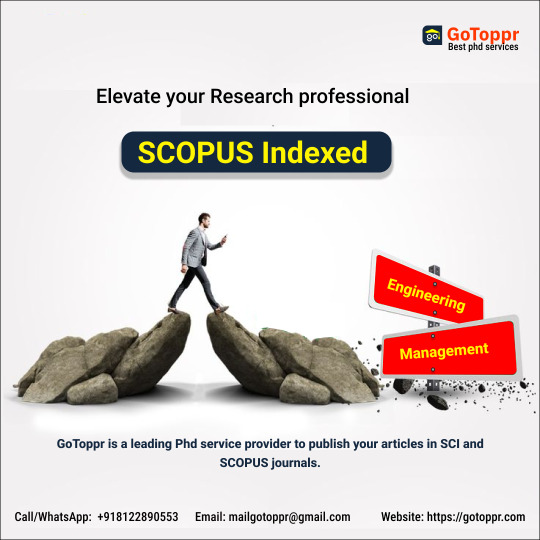
2. Conduct a Comprehensive Literature Search
Use Multiple Databases: Search major academic databases like PubMed, Scopus, Google Scholar, or Web of Science. Don’t limit your search to one database.
Search Keywords Systematically: Use relevant keywords and synonyms to capture the breadth of research. Refine searches by Boolean operators (AND, OR, NOT) and use filters (e.g., date range, journal type).
Track Sources and Take Notes: Keep a systematic record of all the sources you find, with notes on their relevance and contributions. Citation managers like EndNote, Mendeley, or Zotero can be helpful.
3. Organize the Review Logically
Structure by Themes, Not Chronology: Instead of a chronological order, organize your literature by themes, methods, or key debates. Grouping studies by topic or approach helps the reader follow the progression of ideas.
Identify Key Trends and Gaps: Highlight major trends in the literature, such as consistent findings, emerging theories, or recurring methodologies. Identify gaps where research is lacking or where results conflict.
Discuss Landmark Studies: Reference seminal works that have shaped the field, as well as recent studies that represent new directions or findings.
4. Critically Analyze the Literature
Evaluate Methodologies: Assess the strengths and weaknesses of the methodologies used in different studies. Consider if the research designs, sample sizes, and analysis techniques are appropriate.
Compare and Contrast Findings: Discuss similarities and differences in findings across studies. Explain why certain studies may have produced different results.
Highlight Limitations: Point out the limitations of existing research, including biases, gaps, or unresolved questions. This will help to justify the need for your own study.
5. Synthesize the Information
Create a Narrative: Weave together the studies you’ve reviewed to tell a cohesive story. Your literature review should build a logical argument that leads to your research question or hypothesis.
Use Transitions Effectively: Use transitions between sections to show how each theme or study relates to the next. This keeps your review coherent and easy to follow.
Integrate Sources Smoothly: Instead of summarizing each study in isolation, synthesize findings from multiple studies to show consensus or divergence on key issues.
6. Highlight the Contribution of Your Research
Identify Research Gaps: Make clear what questions remain unanswered in the current literature and how your research will fill these gaps.
Position Your Study: Explain how your research builds on or challenges previous work, or how it will extend the understanding of the topic in new directions.
7. Use Proper Citation and Avoid Plagiarism
Cite Appropriately: Use accurate and consistent citation styles as required by the target journal (e.g., APA, MLA, Chicago). Make sure to credit original ideas and avoid over-reliance on direct quotations.
Check for Plagiarism: Use plagiarism detection tools like Turnitin or Grammarly to ensure that your writing is original and correctly paraphrased.
8. Review and Edit Thoroughly
Get Feedback: Before submission, have your review read by colleagues, mentors, or peers for feedback on clarity, coherence, and comprehensiveness.
Proofread: Check for grammatical and typographical errors. Make sure the review reads smoothly and that transitions are clear.
Check Compliance with Journal Guidelines: Ensure that your literature review meets the specific formatting and submission guidelines of the journal (e.g., word count, citation style, section headers).
9. Stay Updated
Monitor New Research: Keep an eye on recent publications even after completing your review. If new studies are published before submission, incorporate them where relevant.
#phd life#university#professor x#academia#research paper#tumblr milestone#black entrepreneurship#phd services#economy#professor layton#professor snape#phd student#college#youtube
2 notes
·
View notes
Text
How to get better at doing research-Zolarink
Improving your research skills involves developing a systematic approach and utilizing strategies that help you efficiently gather, analyze, and synthesize information. Here are several tips to enhance your research capabilities:
1. Clarify Your Research Question
Define the scope: Be specific about the topic or problem you're investigating. A clear and well-defined research question will guide the direction of your work.
Narrow your focus: If the question is too broad, break it down into manageable subtopics or aspects that you can explore in detail.
2. Use Reliable and Varied Sources
Start with academic databases: Use platforms like Google Scholar, JSTOR, PubMed, or subject-specific databases. They provide peer-reviewed journal articles, books, and other scholarly materials.
Evaluate sources: Assess the credibility of the source by checking the author's qualifications, publication date, and the publisher’s reputation.
Diversify your sources: Combine academic papers with books, expert interviews, reports, and other trusted materials to get a well-rounded perspective.
3. Develop Efficient Search Strategies
Use advanced search techniques: Use Boolean operators (AND, OR, NOT), quotes for exact phrases, and asterisks for wildcard searches to narrow or broaden results.
Refine keywords: Experiment with different search terms and synonyms to cover all possible avenues of research.
Search in multiple languages: If applicable, check for sources in different languages to get additional perspectives.
4. Organize and Manage Information
Use reference management tools: Software like Zotero, EndNote, or Mendeley helps you organize your references, store PDFs, and automatically generate citations.
Take organized notes: Keep track of key ideas, quotes, and their sources. This makes it easier to cite later and avoids losing valuable information.
Create an outline: Draft a rough outline of your research to visualize the structure and flow of your final work.
5. Critical Thinking and Synthesis
Analyze the evidence: Don’t just accept information; question its validity, assumptions, and relevance to your research question.
Look for patterns and connections: Compare findings across sources, identify common themes or contradictions, and explore new insights or gaps.
Synthesize, don't summarize: Rather than simply summarizing the material, integrate it into a cohesive narrative that addresses your research question from various angles.
6. Stay Current
Monitor recent publications: Follow leading journals, academic conferences, and news in your field to stay updated on the latest research and trends.
Use citation tracking: Identify key papers in your area of research, and track which later papers have cited them to uncover additional relevant studies.
7. Be Systematic and Consistent
Establish a routine: Dedicate regular time slots for research to maintain focus and progress steadily.
Break down tasks: If the project feels overwhelming, break it into smaller tasks like literature review, data collection, analysis, and writing.
8. Seek Feedback
Consult with experts: If possible, talk to faculty members, colleagues, or professionals who are experienced in the topic.
Peer review: Share your work with others to get constructive feedback. Fresh eyes often catch mistakes or suggest new directions.
9. Improve Writing and Communication
Write as you research: Draft as you go along, rather than waiting until you have everything. This helps clarify your thoughts and often leads to deeper insights.
Be clear and concise: When writing up your research, avoid jargon unless necessary. Write for a general audience, explaining technical terms clearly.
Revise and refine: Editing is key in research writing. Ensure that the structure is logical, arguments are supported, and the writing is free of errors.
10. Develop Persistence and Patience
Expect setbacks: Not every search will be fruitful, and not every lead will pan out. Patience is essential in research.
By honing these skills and habits, you'll gradually become a more efficient, effective, and thorough researcher. The key is consistent practice and adapting your methods to the specific challenges of each new research project.
Please take some time to visit: https://www.zolarink.online/
0 notes
Note
hello sorry if this is weird but thank you so much for posting about mendeley reference manager yesterday!! i’m trying to write a proper academic article as an independent research project but i’m still in high school so i don’t have a lot of resources at my disposal and it’s a Lifesaver i would never have known about otherwise :)))
so happy to be of help!!!! mendeley is such a great resource and i love recommending it, having recently found it myself. we should chat abt research sometime!!!
7 notes
·
View notes